My personal story
I’ve had a long, personal journey with issues surrounding children’s exploration of sexuality…When my youngest daughter was 3, her favourite toy was her Hot Wheels racetrack and cars. Pleased her dad, no end. I too was happy to think that our family accepted our children “as they were”, and didn’t try to force gender stereotypes upon them.
My eldest’s development at primary school was something familiar to me – as she grew up, she begged me for bright pink decor, pinched my makeup, played dress-up, was desperate for “my first jewellery/hostess/little horses” – type presents at Christmas and birthdays, asking for entirely inappropriate clothes because “EVERYONE” had strapless tops and push-up bras age 9. Carefree and knowing, she hung around after school with her friendship group, walking the neighborhood in a desultory manner, scraping her feet (and shoes) on the pavement, arm in arm with her “bezzies”, talking about boys, fashion, pop groups. They fell out, made up, and fell out again, constantly…
My youngest, showed absolutely no interest in any of that. She was far more solitary, bookish. She would stop everything to watch Top Gear on TV to the point that her dad started calling her “petrol-head” (that’s a compliment, by the way). She wanted to play video games rather than join neighborhood groups outside and when I visited friends with children, she could be found on the periphery of the girls’ conversation, or running around with the boys (until they realised that she wasn’t one, and that’s a whole different tale).
At the end of primary school, the youngest went to prom in a beautiful blue chiffon dress that fell into our basket almost the minute we got into the shop. Six weeks later, she had a Rolls Royce-style absolute meltdown choosing autumn casuals. She didn’t know what she wanted. She didn’t want the dresses. She didn’t want the trousers. She didn’t want purple (her then favourite colour) or blue, or green or, or…
From then on, my beautiful child got more and more depressed and withdrawn. She had always displayed some unusual physical behaviours that were eventually diagnosed as motor tics. I thought that was our solution, but the depression deepened. As my eldest sailed through education; GCSEs, A levels, a place at uni seemingly falling into her lap, my youngest seemed surrounded by a cloud of grey fog, hunched shoulders, and a demeanour which said “I’m walking through treacle”. “She’s clever” said her teachers (I knew she was clever). They followed this up with “but she’s not meeting her potential”. Every day was a struggle. She would haul herself out of bed at 8.25am for an 8.45am start and attended school looking like a crumpled rag in her uniform, refusing to let me iron anything even if I had got up at 6am to do so (I was a social worker by this point, and my focus was to make sure everyone was dressed and at school so that *we* wouldn’t end up with a social worker).
She’d return from school, lie about having homework, be devastated that she hadn’t a proper friendship group because she didn’t get on with the girls in her class, was basically shut down, and refused to talk. She looked to me like a little time-bomb who was going to implode and be destroyed from the outside in. I felt sad, and helpless. My eldest was sanguine. “She needs to get a grip”, she’d say, running out to her part time job which she did alongside A levels.
Then one day, age 16. “Mum, I think I’m bisexual”. I was cautious. Did depressed children experiment like this, or were children depressed because they didn’t know how to deal with the myriad societal issues surrounding sexuality and identity at such a young age?
Age 17. “Mum, I’m gay”. Well, yes. Nothing had got better in those intervening months, so I knew that there was more. “I couldn’t give two hoots”, I told her. “You’re my daughter and I love you”.
Age 17.5. “Mum, your parenting was rubbish, and by the way, I’m non-binary”. “Woah there!” How on earth was I supposed to unpick all of that!? It took around two years, in case you’re wondering…
As a Social Worker…
So, swapping to my social work head. How do we work with children who are LGBTQIA+? I think the important thing to remember, is that a child, is a child, is a child. A child deserves to be safe, and brought up where they are nurtured, receive unconditional regard, are accepted, and recognised. Whether a child identifies as straight, CIS, Lesbian, Gay, Bisexual, Trans, Queer, Intersex, Asexual, Non-Binary, Pan-sexual, Gender- Fluid – I’m sure I’ve missed something – the basis of our work as social workers is the same. Keep them safe. Make sure their needs are met. See THEM. Make sure that they can reach their potential, as far as it is possible for them to do.
In working with LGBTQIA+ children, I think that the first thing to do – as with any child – is to get alongside them. Find out how they identify, and what their pronouns are, and beg forgiveness for getting them wrong. Constantly, in my case. Sorry. Find out what they like – same as any other child. Make friends with them. Talk to Sarah – born Steven – about dyeing hair, and painting nails, and how their favourite actor is the best thing since sliced bread. Accept that the next week they may be Steven again. Their sexuality is not a fixed point, it’s a process; our social work has to change around them as much as they do. Expect the unexpected.
As they grow, and mature, social workers do the usual things you would do with a teenager. We give them unwanted lectures about sexual safety. We nag them about homework. We make sure we know what local services are on offer for LGBTQIA+ young people, and advocate for them – same as you would with any other child. In my area we are lucky to have an organization which supports young LGBTQIA+ people age 7 – 25. They hold safe space meetings, activities games, promote inclusivity in education, and advocacy. We should find out what our children want, and promote their wishes and feelings to their parents, carers, other professionals, courts, friends, teachers – same as you would with any other child. Inclusivity on every level, personal and professional must be at the heart of every interaction we have with children.
The differences between one LGBTQIA+ child and another are as far apart as they can be – because we are all individual and different. As can be seen from my own story, there is usually some kind of trauma going on for that child, even those brought up in a loving (educated, middle class) environment. We know how to deal with trauma in children, right? Well, yes, if that child can get on board with us, and has read all of the Neurological science books. Wait, they don’t read the books, do they. So, we find different ways to engage them. Different ways to listen. Sometimes this requires a good deal of time and patience. Trust is often built very slowly – layer by layer. Such children find it difficult to trust, when experience has taught them that they will be at best shoehorned into a “one size fits all” environment at school and in society, and at worst, ridiculed and bullied.
Expect that LGBTQIA+ children will have more to deal with emotionally than the “average” child. They may suffer with poor mental health, struggle in education, find the workplace too much to cope with. They will be hurt by those who do not accept or understand their differences. They may appear oppositional or sullen because they are constantly on the defensive, expecting rejection. It is also easy to unintentionally trigger these feelings by a careless use of words, or well-meaning advice which is not matched by one’s own experience.
Additionally, as social workers, we tend to come across co-morbid problems, i.e. those children who have been neglected, subject to domestic violence and addiction, who are dealing with discovering their own identity on top of external factors over which they have no control. They may also be, as my child is struggling with other neurological issues such as ASD and ADHD which in my experience often go hand in hand with questions around sexual identity. Therefore, someone dealing with questions around their sexuality tends to struggle even more with adversity, where their gender-conforming peers may have more resilience. We need to be aware when this requires professional input of a more specialised nature than ours. Counselling, for example, group activities with peers.
Supporting the parents Too
We also have to accept that it is not easy to parent LGBTQIA+ children if the parent does not share or understand their child’s sexual identity, and that social workers might have to spend time listening to and supporting a parent or carer as much as the child. We have to accept that the parents, the very people who should love their child “no matter what” may find that they cannot. We have to accept that a parent may be frightened or unaccepting of things outside of their personal values and experience, and encourage them to expand their horizons.
We’re only human
Social Workers, are not perfect, and will get it wrong sometimes. However, we also have the potential to get it right with if we follow our social work values, build trusting two-way relationships with our children and young people and remember to put their needs as a child, and their humanity before our perceptions of their barriers to positive outcomes.
As for my youngest child, they’re 22 now. In and out of therapy. Still overwhelmed by society, and their identity. Unable to work as yet, but getting very gingerly to a place where they might know what they want to do at university. They still argue with themselves as to how far to take their masculine side. Hormones? Cosmetic Surgery? It’s all on the cards one day, and none of it is, the next. We are hoping to get a diagnosis of ASD this year, despite a complete lack of support or recognition of either ASD or their sexuality at school who told me my daughter was clever, but lazy, nothing else to worry about. And actually, with perseverance, and a lot of talking, rather than imploding, my little time-bomb exploded, and showered us all with very beautiful, non-binary, multicoloured flowers. They are finally brave enough to stand up and tell people “this is who I am, and I’m still working on it.” In fact, we’re ALL still working on it.
Happy Pride Month, everyone.
Alison Holden



